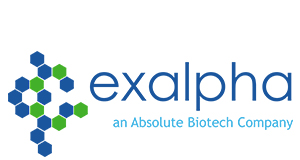Mouse anti Nitrotyrosine
Mouse anti Nitrotyrosine, Monoclonal, IgG1, Clone: 2A12
SKU
EXAX1719M
Packaging Unit
100 µg
Manufacturer
Exalpha Biologicals Inc
Availability:
loading...
Price is loading...
Clone: 2A12
Background: Protein tyrosine nitration results in a post-translational modification that is increasingly receiving attention as an important component of nitric oxide signaling. While multiple nonenzymatic mechanisms are known to be capable of producing nitrated tyrosine residues, most tyrosine nitration events involve catalysis by metalloproteins such as myeloperoxidase, eosinophilperoxidase, myoglobin, the cytochrome P-450s, superoxide dismutase and prostacyclin synthase. Various studies have shown that protein tyrosinenitration is limited to specific proteins and that the process is selective. For example, exposure of human surfactant protein A (SP-A) to oxygen-nitrogen intermediates generated by activated alveolar macrophages resulted in specific nitration of SP-A at tyrosines 164 and 166, while addition of 1.2 mMCO 2 resulted in additional nitration at tyrosine 161. The presence of nitrotyrosine-containing proteins has shown high correlation to disease states such as atherosclerosis, Alzheimer's disease, Parkinson's disease and amyotrophic lateral sclerosis.
Immunogen: 3-Nitrotyrosine-KLH
Concentration: See vial for concentration
Source: Mouse monoclonal antibody 2A12, obtained after immunization of mice with 3-Nitrotyrosine-KLH
Specificity: Nitrotyrosine
References: 1. Knight-Lozano, C.A., et al. 'Cigarette smoke exposure and hypercholesterolemia incrase mitochondrial damage in cardiovascular tissues.' Circulation, 105, 849-854 (2002)2. Khan, F. & Siddiqui, A.A. 'Prevalence of anti-3-nitrotyrosine antibodies in the joint synovial fluid of patients with rheumatoid arthritis, osteoarthritis and systemic lupus erythematosus.' Clin Chim Acta, 370, 100-107 (2006).3. Deeb, R.S., et al. 'Tyrosine nitration in prostaglandin H2 synthase.’ J Lipid Res, 43, 1718-1726 (2002).4. Blanchard-Fillion, B., et al. 'Metabolism of 3-nitrotyrosine induces apoptotic death in dopaminergic cells.' J Neurosci, 26, 6124-6130 (2006).
Caution: This product is intended FOR RESEARCH USE ONLY, and FOR TESTS IN VITRO, not for use in diagnostic or therapeutic procedures involving humans or animals.
Background: Protein tyrosine nitration results in a post-translational modification that is increasingly receiving attention as an important component of nitric oxide signaling. While multiple nonenzymatic mechanisms are known to be capable of producing nitrated tyrosine residues, most tyrosine nitration events involve catalysis by metalloproteins such as myeloperoxidase, eosinophilperoxidase, myoglobin, the cytochrome P-450s, superoxide dismutase and prostacyclin synthase. Various studies have shown that protein tyrosinenitration is limited to specific proteins and that the process is selective. For example, exposure of human surfactant protein A (SP-A) to oxygen-nitrogen intermediates generated by activated alveolar macrophages resulted in specific nitration of SP-A at tyrosines 164 and 166, while addition of 1.2 mMCO 2 resulted in additional nitration at tyrosine 161. The presence of nitrotyrosine-containing proteins has shown high correlation to disease states such as atherosclerosis, Alzheimer's disease, Parkinson's disease and amyotrophic lateral sclerosis.
Immunogen: 3-Nitrotyrosine-KLH
Concentration: See vial for concentration
Source: Mouse monoclonal antibody 2A12, obtained after immunization of mice with 3-Nitrotyrosine-KLH
Specificity: Nitrotyrosine
References: 1. Knight-Lozano, C.A., et al. 'Cigarette smoke exposure and hypercholesterolemia incrase mitochondrial damage in cardiovascular tissues.' Circulation, 105, 849-854 (2002)2. Khan, F. & Siddiqui, A.A. 'Prevalence of anti-3-nitrotyrosine antibodies in the joint synovial fluid of patients with rheumatoid arthritis, osteoarthritis and systemic lupus erythematosus.' Clin Chim Acta, 370, 100-107 (2006).3. Deeb, R.S., et al. 'Tyrosine nitration in prostaglandin H2 synthase.’ J Lipid Res, 43, 1718-1726 (2002).4. Blanchard-Fillion, B., et al. 'Metabolism of 3-nitrotyrosine induces apoptotic death in dopaminergic cells.' J Neurosci, 26, 6124-6130 (2006).
Caution: This product is intended FOR RESEARCH USE ONLY, and FOR TESTS IN VITRO, not for use in diagnostic or therapeutic procedures involving humans or animals.
| SKU | EXAX1719M |
|---|---|
| Manufacturer | Exalpha Biologicals Inc |
| Manufacturer SKU | X1719M |
| Package Unit | 100 µg |
| Quantity Unit | STK |
| Reactivity | Various species |
| Clonality | Monoclonal |
| Application | Western Blotting |
| Isotype | IgG1 |
| Host | Mouse |
| Conjugate | Unconjugated |
| Product information (PDF) | Download |
| MSDS (PDF) | Download |

 Deutsch
Deutsch






